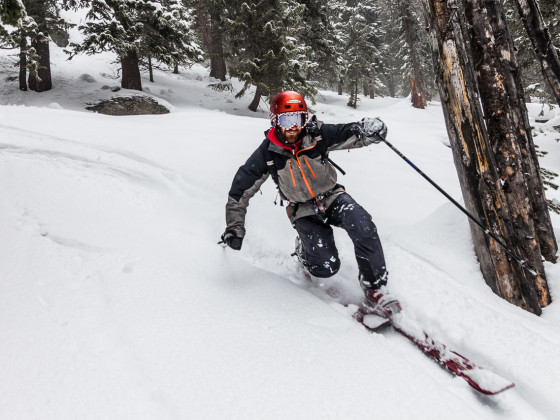1. There are six ski resorts averaging 300+ inches of snow annually.
Photo: Ben Adkison
And these ski areas add up to over 7,000 acres of terrain. Your options range from the giant expanse of Whitefish Mountain Resort in the north, one of the top-rated ski resorts in the country, to Missoula’s Montana Snowbowl farther south. The small-town vibe at Snowbowl is super inviting; post-ski, you might want to order a round of Bloody Marys at the Last Run Inn — they’re consistently voted the best in Missoula.
2. There’s easily accessible backcountry where you can get away from the crowds.

Photo: Ben Adkison
For those who’d rather not rely on a chairlift to deliver their powder turns, Western Montana has plenty of easy access to backcountry skiing. Head to Lolo Pass, an hour west of Missoula, for mellow tree skiing. Or if you want something a little more intense, steep couloirs can be found to the north in the Mission Mountains or in Glacier National Park.
For overnight trips, Yurtski has warm and comfortable yurts available in the Swan Mountains, and Great Northern Powder Guides runs cat skiing north of Whitefish if you decide you don’t want to trudge up mountains on your own to get untouched powder.
3. There’s lots of open National Forest and BLM land for snowmobiling.
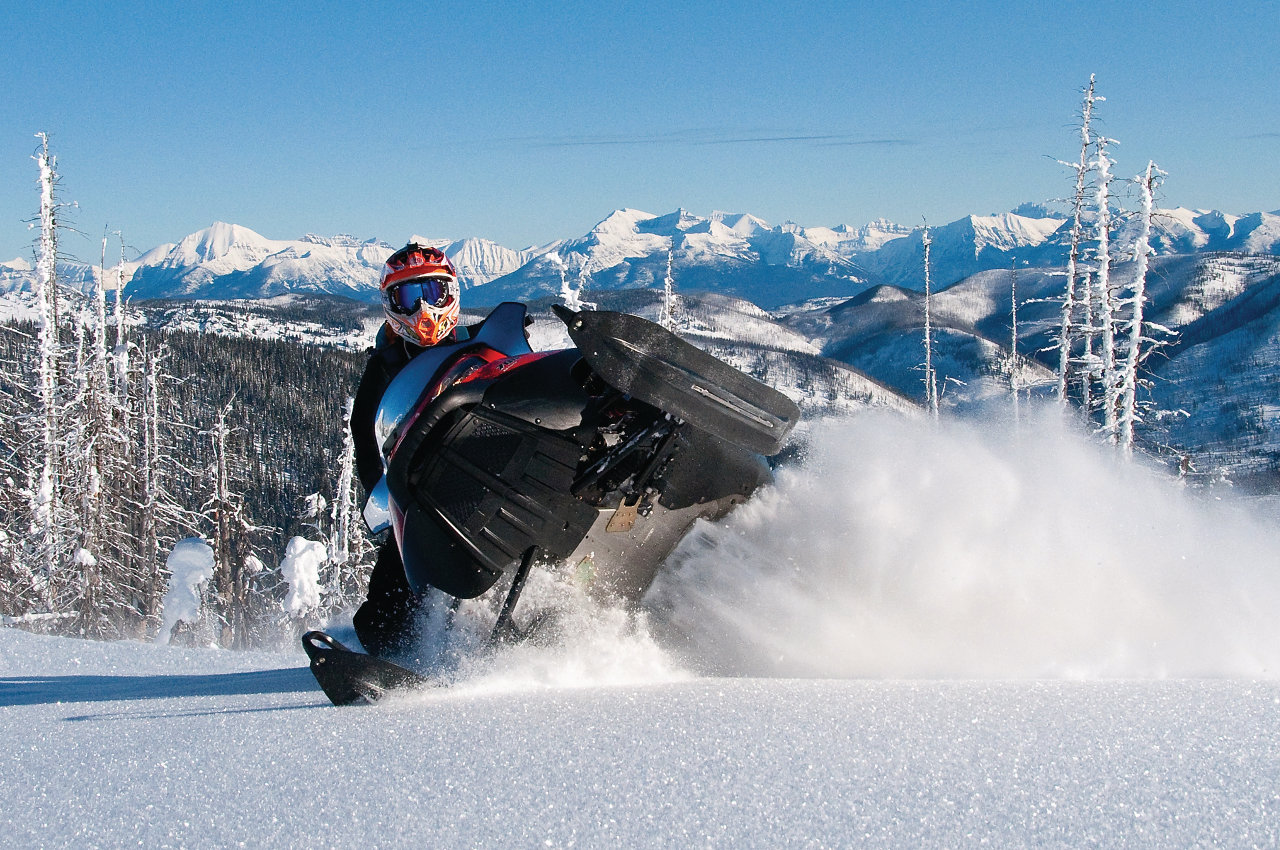
Photo courtesy of Glacier Country Tourism
Western Montana has thousands of acres of National Forest and BLM land, and much of it is open for snowmobiling during the winter. A variety of hilly terrain and groomed trails can be found near Lolo Pass west of Missoula. On your way back to town, stop at the Jack Saloon (formerly the Lumberjack Saloon) for some fried green beans. Built out of giant cedar trees that are impossible to wrap your arms around, the saloon sits a few miles down a dirt road off Highway 12, with live music and free camping every Saturday night.
Snowmobile rentals range from $100 for a half day to just over $200 for a full day. If it’s your first time riding, consider going with a local guide for safety, instruction, and local knowledge — it’ll be worth the extra $100-200 per trip. And don’t worry about breaking down; a snowmobile mechanic and dealership is available in nearly every town out here.
4. You’ll have Glacier National Park practically to yourself.

Photo courtesy of Glacier Country Tourism
Each year Glacier National Park attracts over 2 million visitors. But only 60,000 of them arrive in the wintertime, despite the fact that this is when you’ll see some of the most beautiful scenery in the US.
The Going-to-the-Sun Road remains open for the first 11.5 miles into the park, just far enough to reach Lake McDonald Lodge. Beyond the lodge the road, often bumper-to-bumper with cars in summer, is closed to vehicle traffic, leaving it noise (and crowd) free for cross-country skiing or snowshoeing.
5. Snowshoeing and hiking options are abundant.
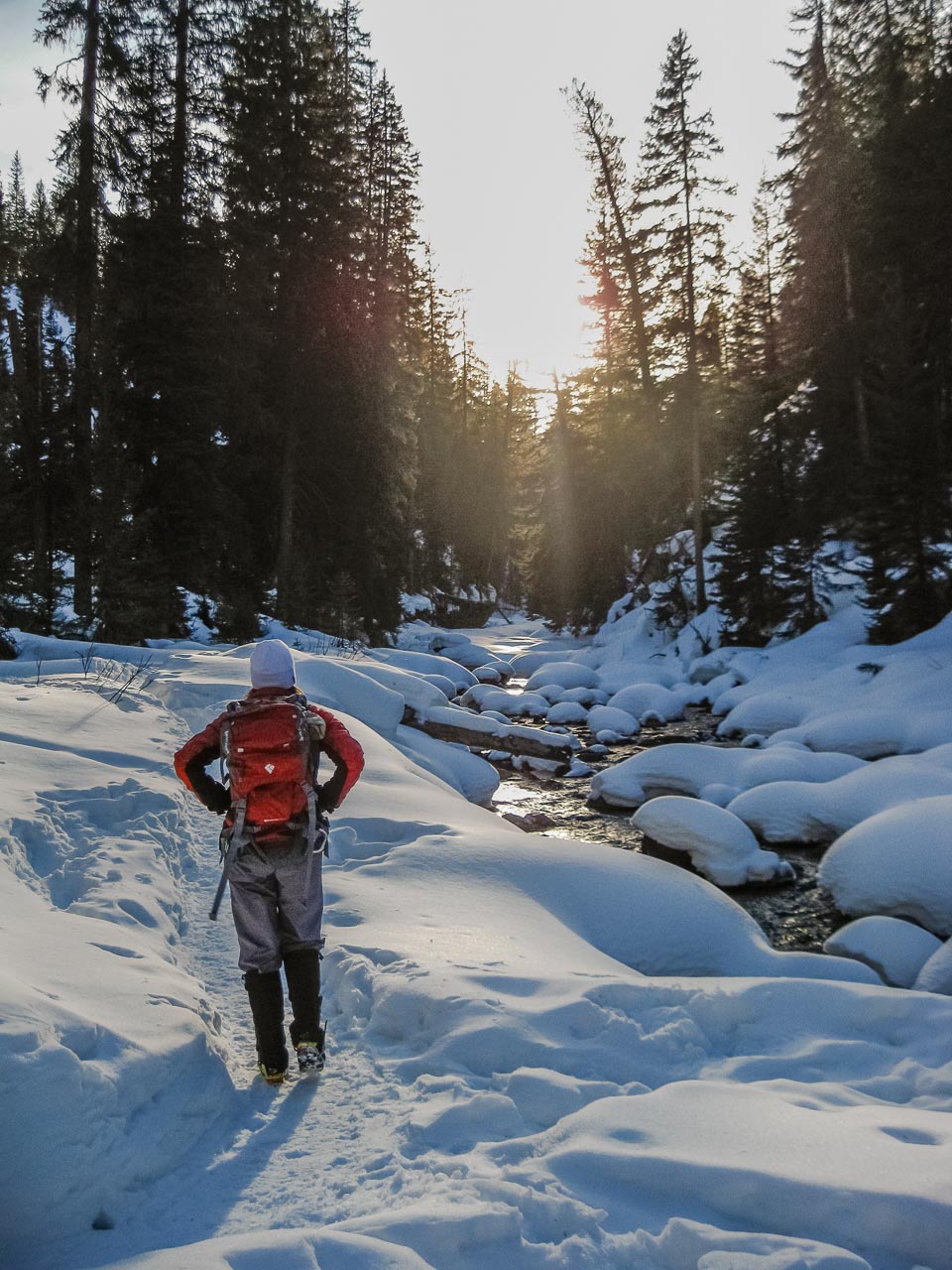
Photo: Ben Adkison
Many of the 700 miles of trails in Glacier stay open for hiking and snowshoeing in the winter (check the national park’s skiing and snowshoeing page for closures and current conditions). Marias Pass, just south of the park, offers scenic snowshoeing routes with perfect views into Glacier, and you’ll see the Great Bear and Bob Marshall Wilderness Areas to the south. Rent snowshoes and get trail advice at the Sportsman & Ski Haus in Whitefish or Kalispell.
Slightly warmer temperatures in the valleys might entice hikers and bikers to stick to the paved — and often snow-free — Bitterroot Trail between Lolo and Hamilton in the Bitterroot Valley.
6. You can test your cold weather backpacking and ice climbing skills on some of the most beautiful peaks in the Rockies.
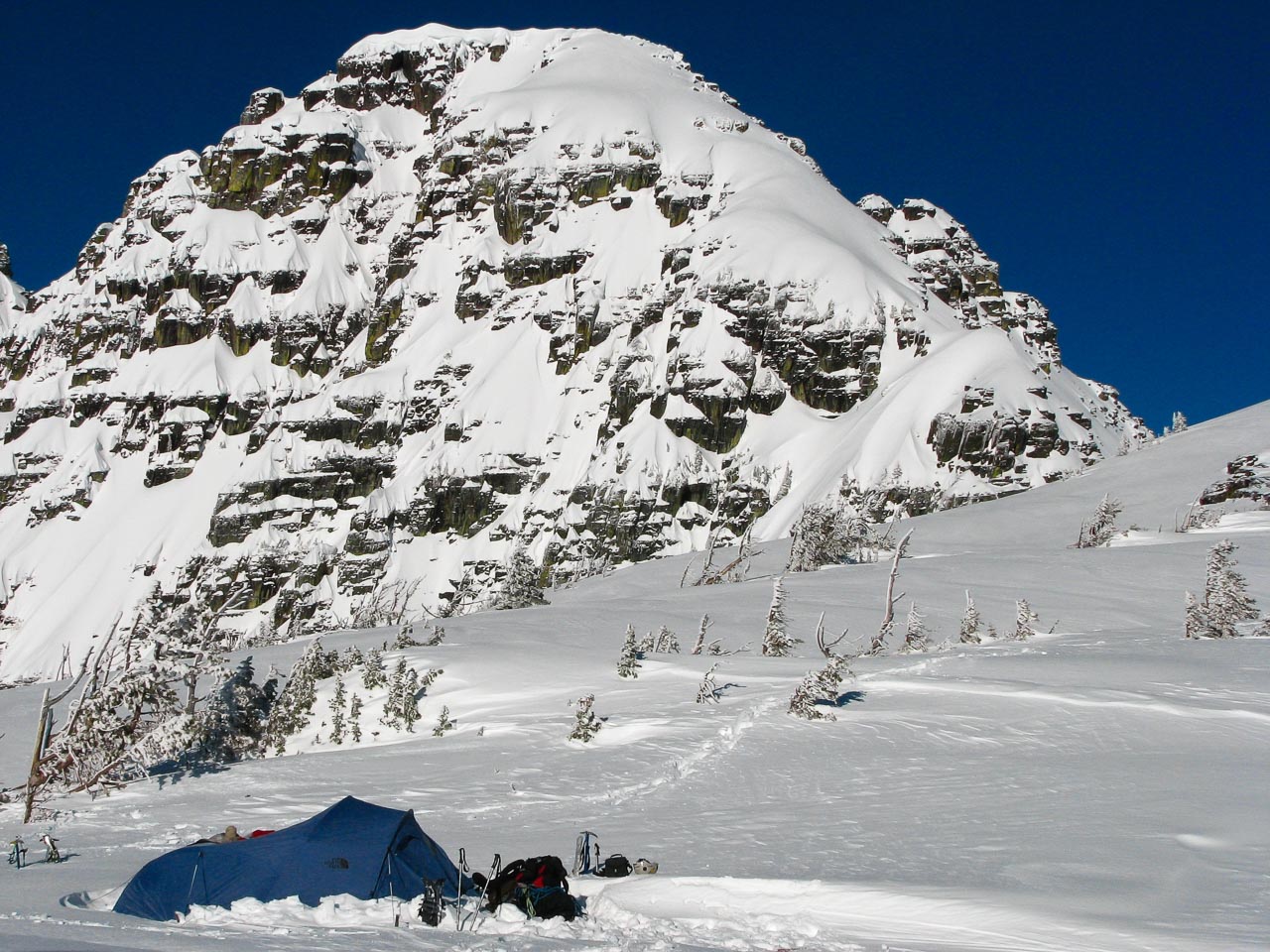
Photo: Ben Adkison
The mountains of Glacier National Park and the Mission and Bitterroot Ranges have a range of ice climbing, mountaineering, and winter camping opportunities. A winter summit in Glacier, like popular Saint Nicholas Peak, requires a multi-day commitment, whereas smaller objectives such as Gray Wolf Peak in the Missions or St. Joseph Peak in the Bitterroots can be done in a day.
Mission Falls is a destination ice climbing crag with moderately steep climbs rated Water Ice 3, as well as steeper, more challenging Water Ice 5 routes. Local gear shops like the Trail Head in Missoula have all the gear and local beta for the best spots to take on a winter summit.
7. You can soak in hot springs surrounded by giant ponderosa pines and snowy mountains.
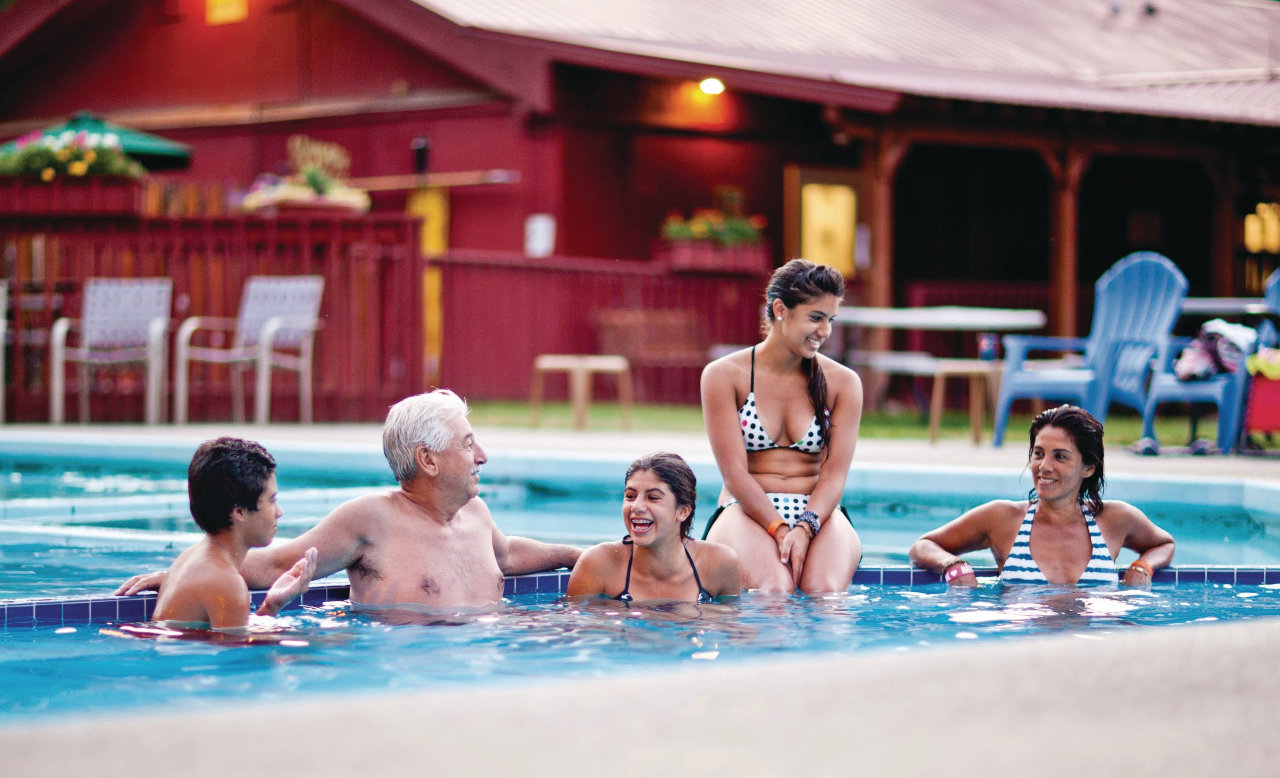
Photo courtesy of Glacier Country Tourism
With hours of outdoor adventures behind you, it’ll finally be time to unwind. Stop into Lolo Hot Springs after a day of snowmobiling or snowshoeing at Lolo Pass for indoor and outdoor soaking options. It’s located 7.5 miles from the pass, meaning you can ride there in your snow machine or snowshoe out the front door of one of the cabins available for rent.
Or, after skiing powder at Lookout Pass, stop into Quinn’s Hot Springs in Paradise to ease those tired legs and enjoy one of the best dinners in Montana.
8. There’s more to Montana than just mountains and trees and snow.
While most people visit Montana to escape into nature, there’s way more than just beautiful scenery to enjoy here. In the mountain valleys, along the shores of lakes, and at the base of most ski resorts are numerous towns to explore.
Missoula, Western Montana’s largest hub, offers plenty of entertainment and food options to keep you busy. Catch a movie or concert at the historic Wilma theater before heading north to Whitefish to pick up locally made huckleberry jam. (Tip: Look for the circular “Made in Montana” sticker when picking up gifts.) Huckleberries dominate the local food scene across Western Montana, and especially at Whitefish’s Stumptown Marketplace. Start your day off with a huckleberry bear claw Danish and finish it of with some huckleberry ice cream.
9. Each night will be memorable at a slope-side lodge or historic inn.
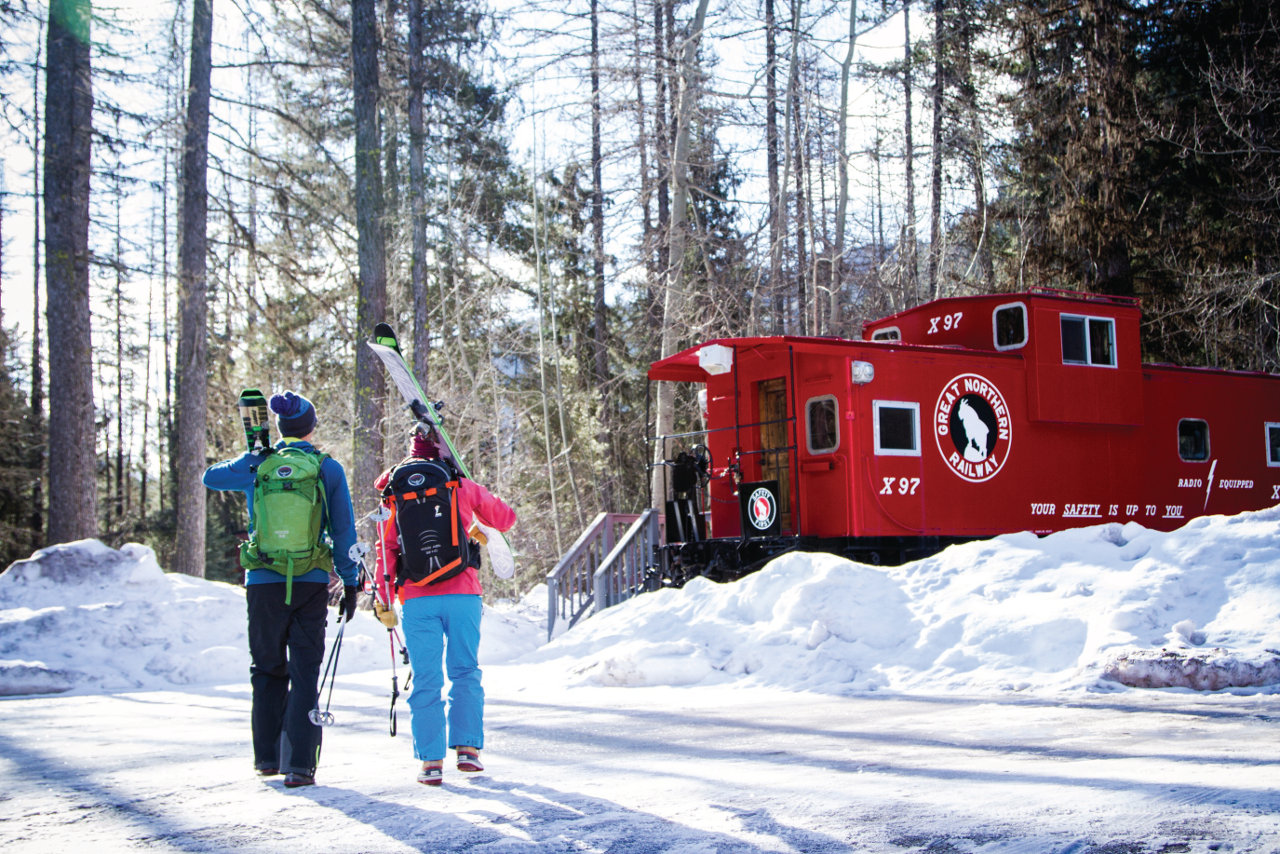
At the Izaak Walton Inn. Photo: Noah Couser
To complete a winter trip to Western Montana, a few of your nights should be spent at a mountainside lodge. Most ski areas have ski-in, ski-out accommodations, like the Last Run Inn at Montana Snowbowl, where there’s superb wood-fired pizza, those top-rated Bloody Marys, and a hot tub with views of the 2,600 vertical feet of terrain the mountain offers.
If a ski resort isn’t your thing, check out the historic Izaak Walton Inn. Built in 1939, it’s located just south of Glacier in Essex, a short walk from the Amtrak station.
10. Montanans know how to make great beer (and spirits).
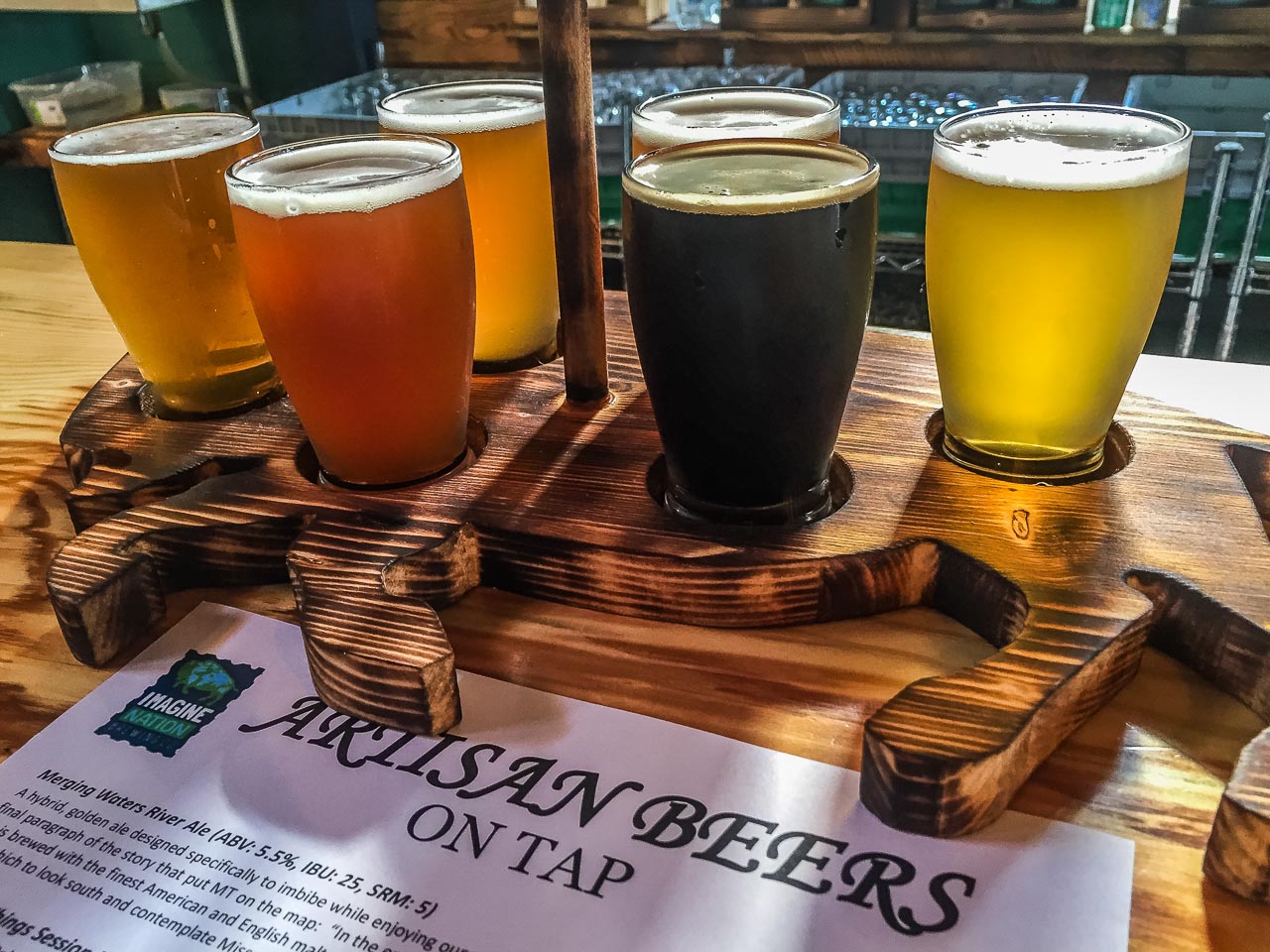
Photo: Ben Adkison
Western Montana is home to 22 breweries and seven distilleries, and more pop up each year. Try the Centennial IPA from Flathead Lake Brewing in Bigfork if you like aggressive hops. Or order one of the many custom cocktails — like the award-winning Black Diamond, with handmade Whyte Laydie Gin or Quicksilver Vodka — from the Montgomery Distillery in Missoula.
And nearly every town in the Bitterroot Valley has a brewery where you can sample local craft beer. Seriously, from Bandit Brewing in Darby to Lolo Peak in Lolo, there’s an average one brewery per every eight miles.

